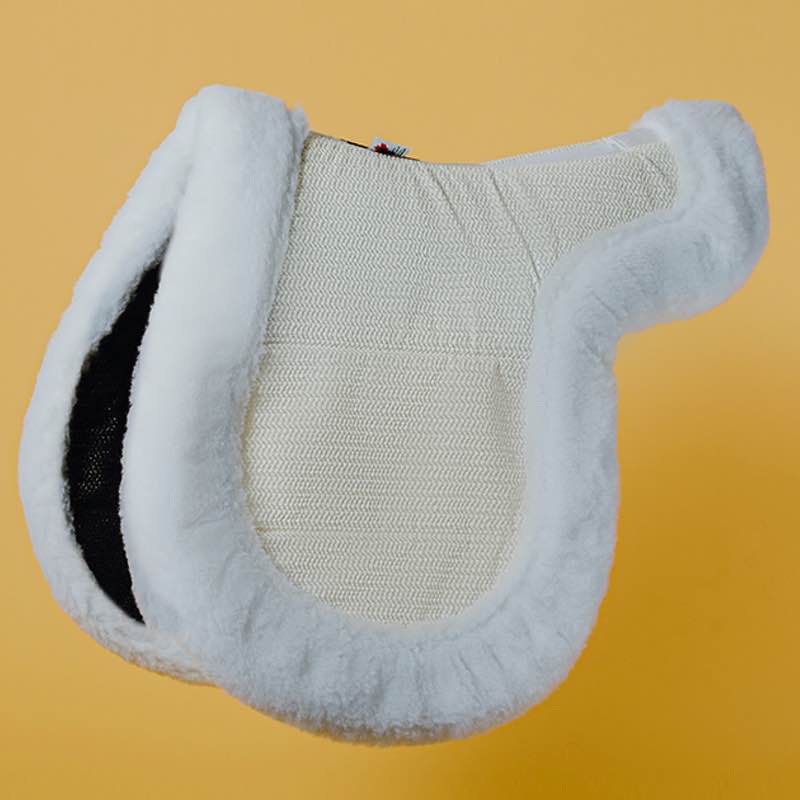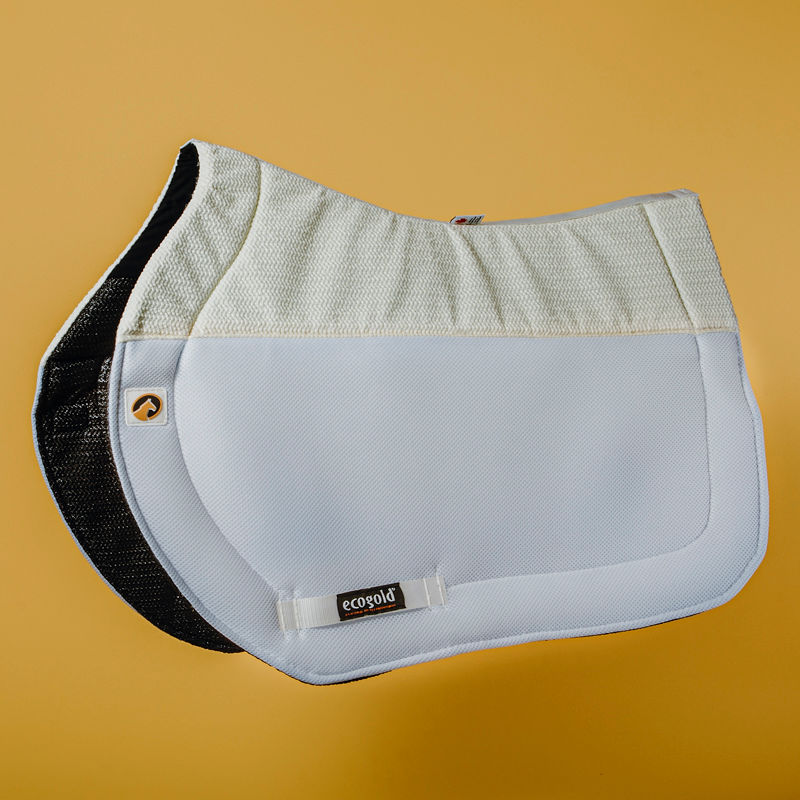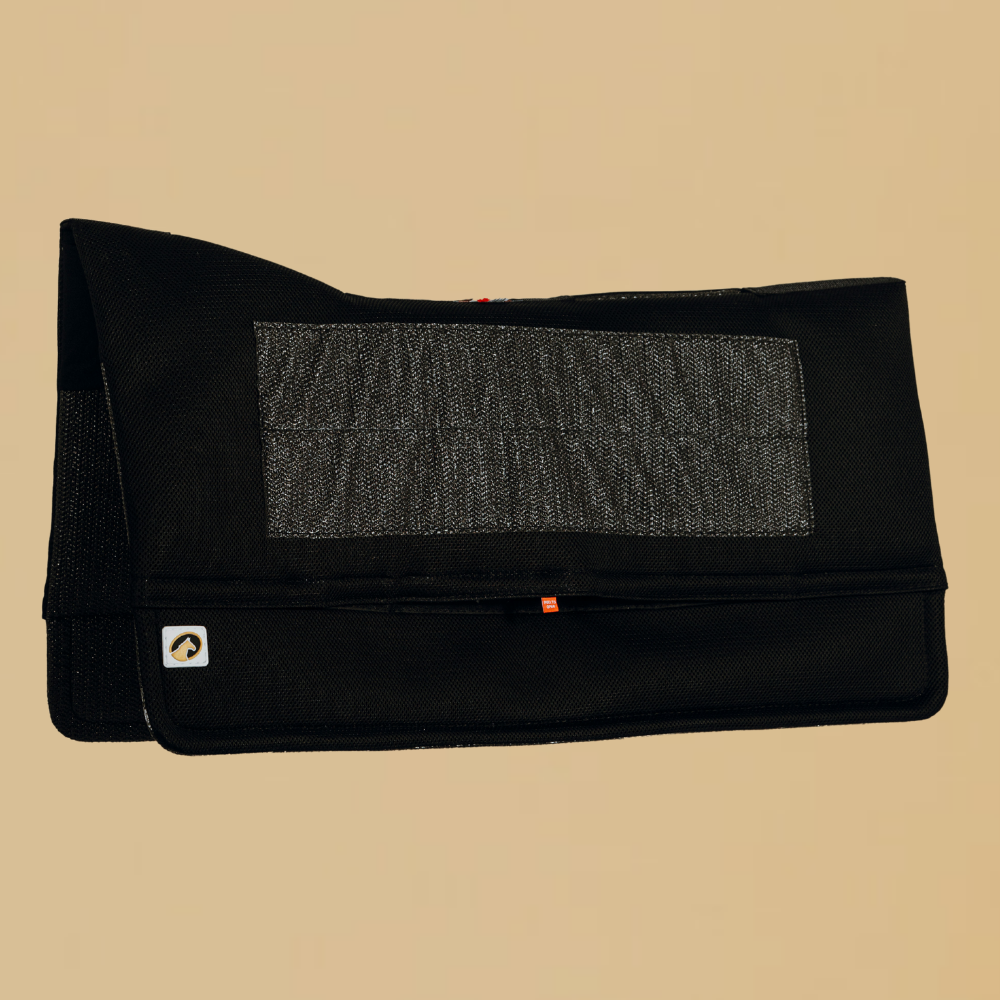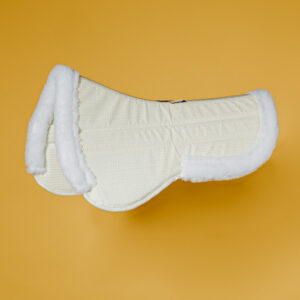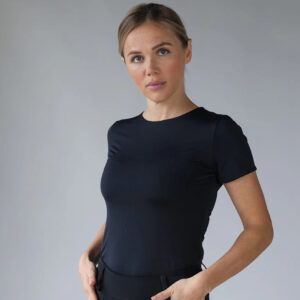Saddle pad slipping is a common frustration for equestrians, leading to discomfort for both horse and rider. Whether your pad shifts sideways, slides back, or bunches up, finding a reliable solution is essential for a safe and comfortable ride. Let’s explore the key reasons behind saddle pad slippage and the best techniques to keep your pad in place.
Why Does Your Saddle Pad Slip?
Several factors contribute to saddle pad movement. Identifying the root cause can help you choose the best solution.
1. Poor Saddle Fit
A saddle that does not fit properly will not sit securely on the horse’s back, leading to pad slippage. For example:
If the tree is too wide, the saddle may rock and cause the pad to slide backward.
If the tree is too narrow, the saddle may pinch and push the pad forward.
Solution: Regular saddle fit checks with a professional fitter can prevent these issues. If minor adjustments are needed, shimmable half pads—such as those offered by Ecogold—can help fine-tune the fit.
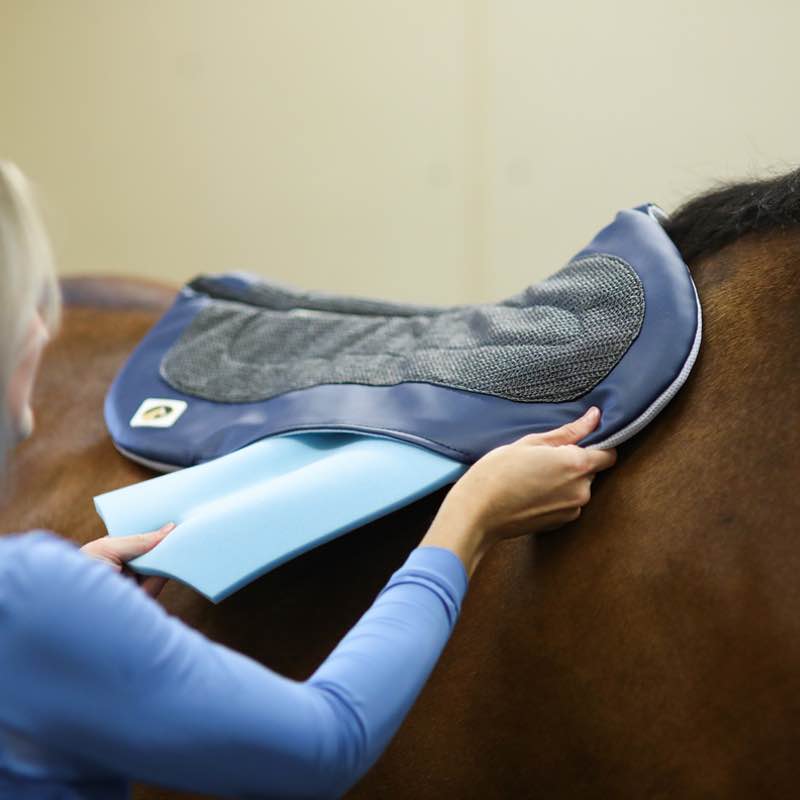
2. The Horse’s Conformation and Movement
A horse’s build and motion significantly impact saddle pad stability. Some examples include:
Short-backed horses: Pads may move forward due to a lack of space for proper placement.
High-withered horses: Pads can shift backward if they don’t contour properly.
Active movers: Horses with expressive gaits or frequent transitions may experience more pad movement.
Solution: Choosing a pad designed for your horse’s conformation—like Ecogold’s anatomical saddle pads—can help prevent slipping.

Ecogold saddle pads have a high-wither anatomical design
3. Incorrect Saddle Pad Fit
A pad that is too large or too small will not sit correctly, causing movement.
Solution: Ensure that your pad matches the shape of your saddle and the size of your horse. Pads with contoured toplines and ergonomic designs offer better stability.
4. Low-Quality or Unsuitable Materials
Some materials slide more easily than others, leading to frequent adjustments during your ride. Synthetic, slippery fabrics tend to be less stable compared to grip-enhanced options.
Solution: Non-slip pads with advanced grip technology—like Ecogold’s Secure Saddle Pads—offer superior traction without compromising comfort.
Best Solutions to Stop Saddle Pad Slippage
Once you identify why your saddle pad is slipping, implementing the right solution will ensure a stable, comfortable ride.
1. Use a Non-Slip Saddle Pad
Non-slip technology is one of the most effective ways to keep your saddle pad secure. Look for features like:
Grippy undersides: Materials like Ecogold’s friction-based non-slip technology provide a secure fit without harming the horse’s coat.
Breathable fabrics: Moisture-wicking properties reduce sweat buildup, which can contribute to slippage.
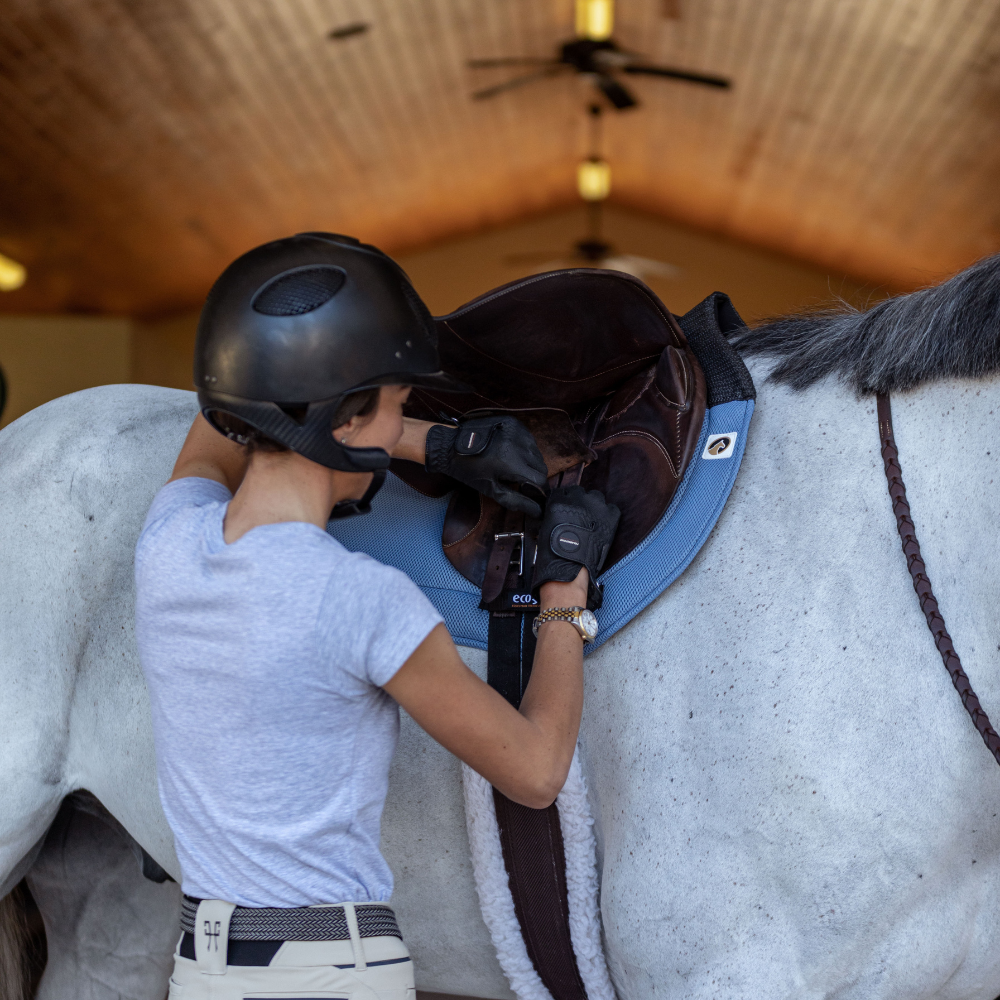
2. Place the Pad Correctly Before Riding
Even the best saddle pad will slip if not positioned correctly. Follow these steps:
Place the pad slightly forward on the withers.
Pull it up into the gullet to create spinal clearance.
Adjust the saddle on top and check that the pad is symmetrical on both sides.
Tighten the girth gradually while ensuring the pad stays centered.
3. Regularly Maintain Your Tack and Pad
Dirt, sweat, and hair buildup can cause a pad to become slippery over time.
Wash your saddle pad regularly to maintain its grip.
Brush off hair and dirt after each ride.
Check for wear and tear to ensure your pad maintains its effectiveness.
Final Thoughts: The Right Saddle Pad Makes All the Difference
Preventing saddle pad slippage is about more than just the pad—it’s a combination of proper saddle fit, quality materials, and good riding habits.
Investing in a high-performance, non-slip saddle pad—like those from Ecogold—ensures both security and comfort for your horse, allowing you to focus on riding without constant adjustments.
Ready to eliminate saddle pad slipping for good? Explore Ecogold’s innovative non-slip saddle pads today!



